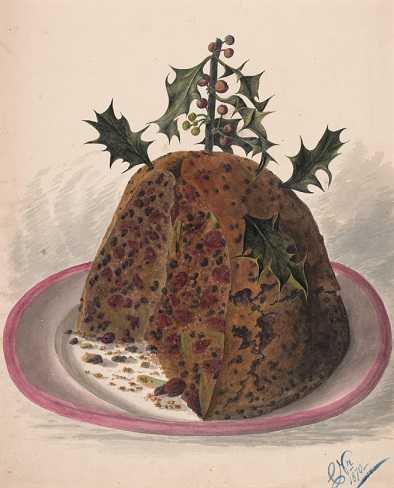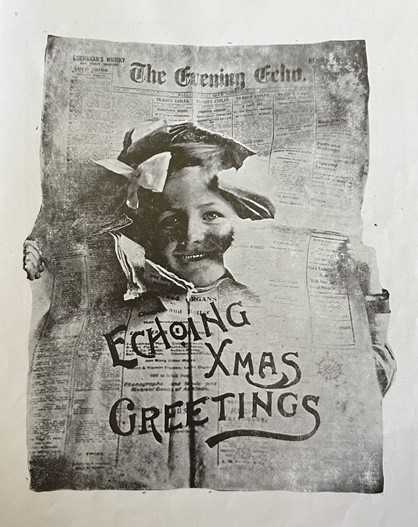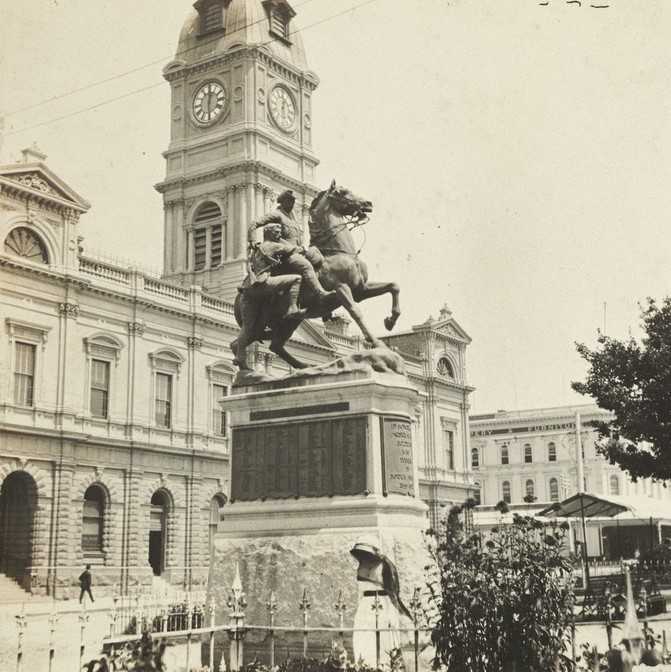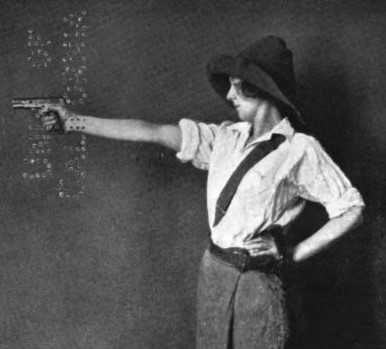With the festive period upon us, I thought it might be good to have a Christmas themed post. The idea for this post came to me whilst conducting research for a visitor to BRHAE on a completely different topic. Whilst undertaking the research, I stumbled across the history of the Empire or King’s Christmas Pudding.
The idea of the Empire Christmas Pudding was the brainchild of the Empire Marketing Board. The board was established in the 1920s in England. Its main purpose was to encourage imperial trade amongst the dominions and colonies of the British Empire. They achieved this through marketing initiatives via posters and various other forms of media that were available at the time. (1)
In 1922 the British Women's Patriotic League established an Empire Shopping Week. The purpose of the week was to encourage British housewives to buy products from what was politely known in Britain at the time as “the dominions”. Generally, they were known as colonies. (2) It must be remembered that Australians at this time still had to declare their nationality as British. In fact, it was not until 1984 that Australian citizens ceased to be British subjects. (3)
The Empire Marketing Board was established in 1926 to promote produce from countries of the Empire. One of its first marketing initiatives encouraged people to bake a Christmas pudding incorporating ingredients sourced from these countries. An 'Empire Pudding' was baked and presented to King George V to be enjoyed on Christmas Day 1926. (4) The advertising campaign for the Christmas pudding urged housewives to help in giving employment to their own ‘kith and kin’ by supporting Empire produce. (5)
In 1927, the Empire Marketing Board began an advertising campaign for the Christmas Pudding. The advertising campaign proved to be expensive. A full-page advertisement in London’s 'Daily Mail' was 1,400 pounds. Copies of the advertisement were sent to retailers throughout the United Kingdom. Circular letters were also sent to dealers, wholesalers and retailers. (6)
Many countries of the empire participated in the campaign as well, including Australia, New Zealand and Canada. Ballarat, along with many towns in Victoria, took part in the campaign to encourage shoppers to buy imperial ingredients for use in their Christmas puddings. (7)
In November 1927 an ‘exhibition pudding’ was made using the original recipe with ingredients from the empire, but an unfortunate mishap occurred when the giant pudding split in half as it was being iced. This is odd, as Christmas puddings are rarely iced. A replacement had to be commissioned which took 20 hours to bake. Another pudding parade had to be organized through the streets of London. (8) Here is a link to how the 'Townsville Daily Bulletin' (9) reported on the parade:
https://trove.nla.gov.au/newspaper/article/60710870?browse=ndp%3Abrowse%2Ftitle%2FT%2Ftitle%2F97%2F1927%2F12%2F05%2Fpage%2F4988282%2Farticle%2F60710870
Researching through various Victorian regional newspapers, including 'The Ballarat Courier', the wording that appeared is the same as that used in the 'Shepparton Advertiser' on October 27, 1927. It reads, “the king’s chef, Mr Cedard with their majesties gracious consent has supplied to the Empire Marketing Board a recipe for an Empire Christmas Pudding. It will appear in good time so that people can make their puddings made exclusively of ingredients of the empire.” (10) The list of ingredients and the country of the empire they originated from rounded out the rest of the news article. The campaign must have been successful as my grandmother for many years made her Christmas pudding using this method.
The Empire Christmas Pudding campaign continued through the late 1920s and early 1930s. It stopped in 1933 when the British government closed the Empire Marketing Board. Despite the closure of the board and therefore the end of the campaign, the Empire Christmas Pudding still proved popular and continued to be popular or many years. As O’Connor notes, “the King's Christmas pudding remained a fixture of the empire holiday season for many years. The recipe appeared in a number of cookbooks and magazines while leaflets were kept and passed though families.” (11) As O’Connor further points out, “the empire Christmas pudding played an important and cultural and commercial role until the outbreak of the Second World War.” (12)
While researching this post I came across an interesting Christmas pudding anecdote relating to Ballarat in Doug Bradby’s booklet titled Merry Christmas from historic Ballarat. (13) The story appeared in 'The Register' (Adelaide) newspaper January 1912 and can be read using this link: (14)
https://trove.nla.gov.au/newspaper/article/59043819/4504892
As well as making a delicious Christmas dessert, the Empire Christmas Pudding also promoted the idea of the empire as a family. O’Connor sums it up best when she writes, “once a year external differences and difficulties were set aside in the celebration of Christmas and this is where the significance and value of the King’s Christmas pudding in the inter war years lie. In a world that would soon change out of all recognition it gave empire and nation back their Merry Christmas.” (15)
On behalf of the staff at BRHAE and the Eureka Centre I would like to wish everyone best wishes and season’s greetings for the holiday period - and may 2023 be a year full of much successful research.
Here is the link to the article from the 'Shepparton Advertiser', 27 October 1927, displaying the advertisement placed in Australian newspapers with the ingredients for the pudding with country of origin. https://trove.nla.gov.au/newspaper/article/190014799/19347055
Recipe for an Empire Christmas pudding using ingredients from the empire: https://www.cooksinfo.com/empire-plum-pudding-recipe
Simon Jacks
Australiana Research Librarian




